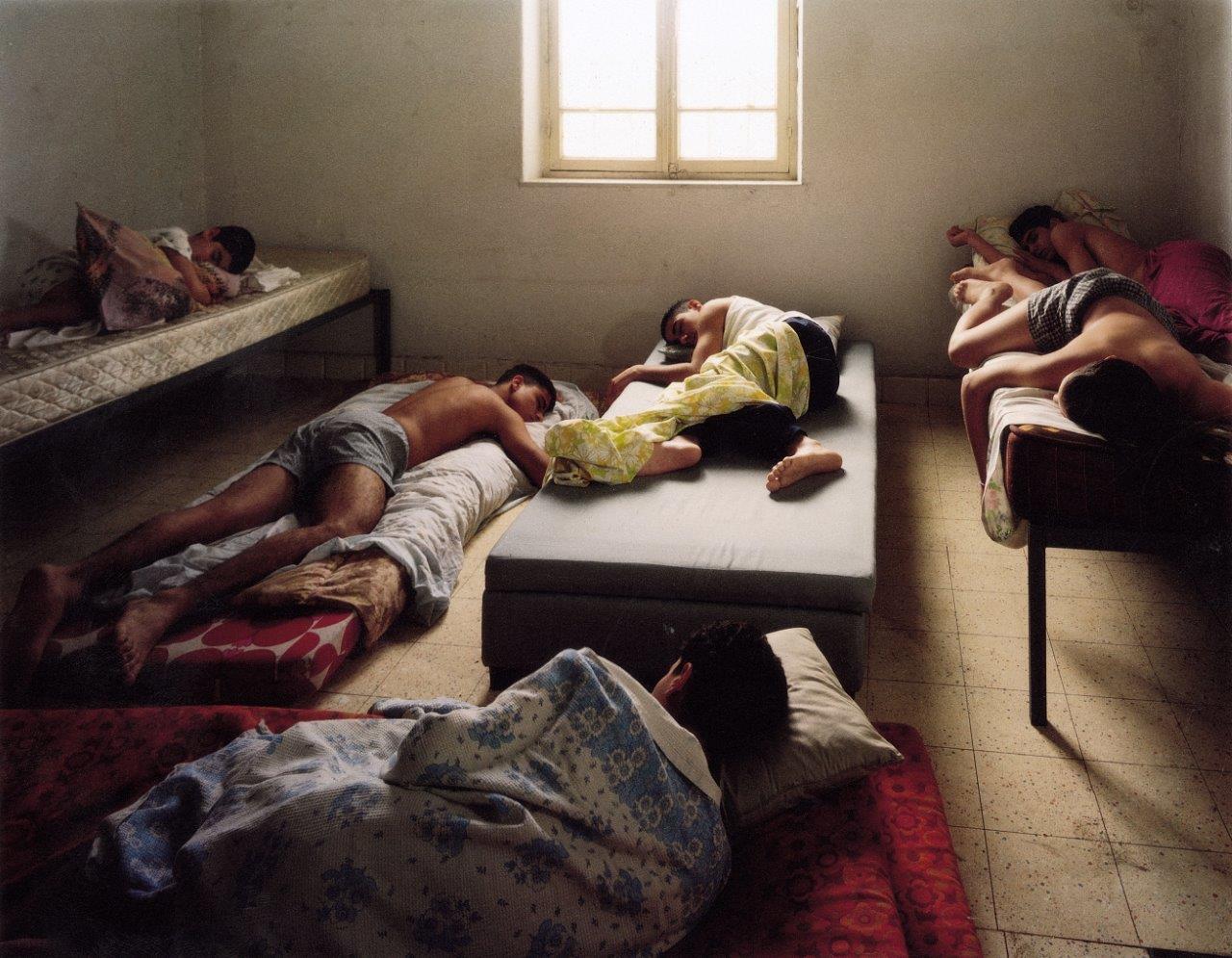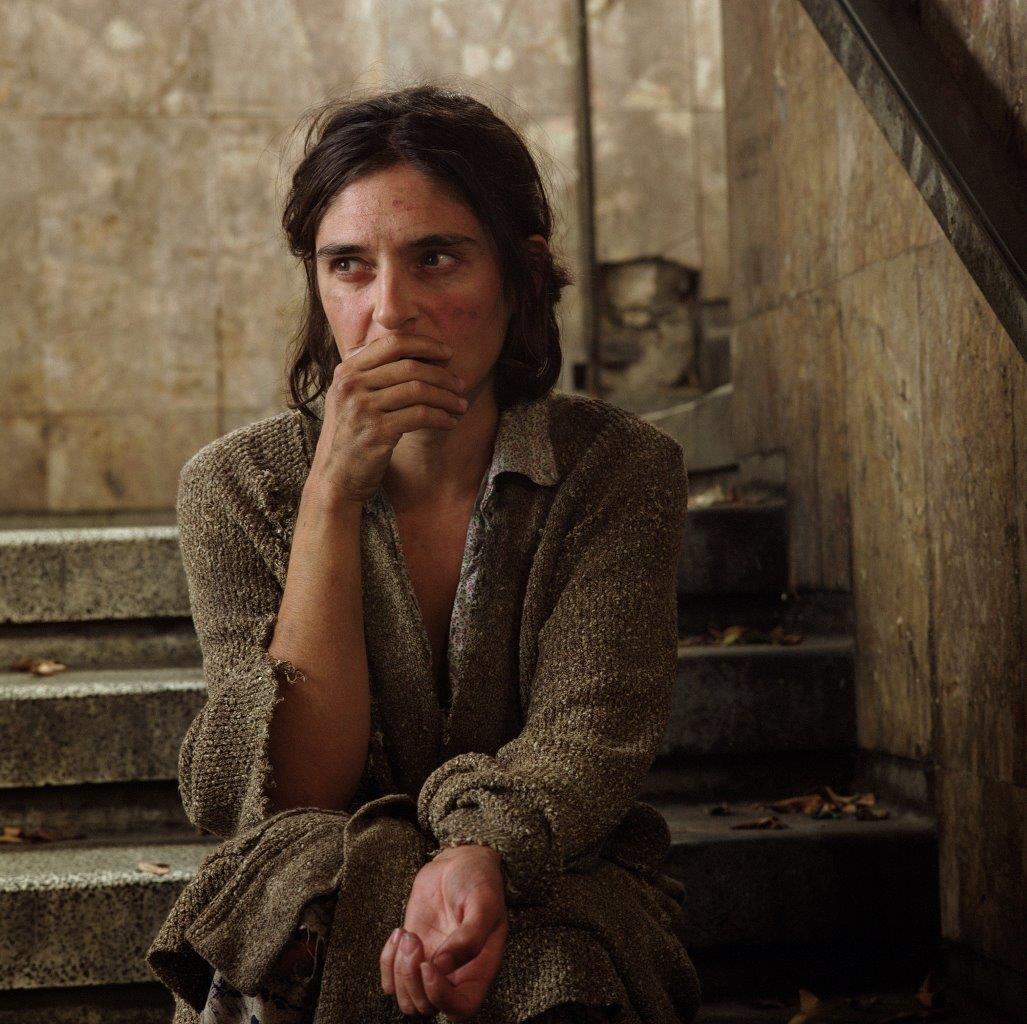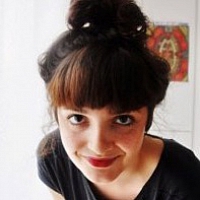
© Adi Nes, The Last Supper
We discovered Adi Nes at the http://www.imj.org.il/">Israel at Jerusalem with « The Last Supper » last November and we were really impressed by his work. Like a film director, Adi Nes meticulously composes his pictures. From each of them emerge an « unsettling strangeness » but also a research about the constant tension between the issues of identity and the Israelien culture. Using great myths and everyday life topics, Adi Nes is giving birth to pictures of powerful humanity and breathtaking photographies. He agreed to give us a special interview.
How did you become a photographer?
My journey to the world of photography began as a mistake. Twenty years ago when I was enrolling in art school, the registration form confused me and I accidentally indicated that I wanted to study in the photography department. I arrived at the interview with my painting portfolio and, much to my surprise, was accepted – to the photography department! I’ve always naturally been close to the fine arts, and for many ears earned my living in the film and television industries. I also studied art during the period of Post-Modernism, and during the time when the creations of photographers who fabricated reality, like Cindy Sherman, was very fashionable. I’m a control freak by nature and I think this also influences my desire to understand reality through very complex photographic productions.

© Adi Nes, «Biblical Stories» series, David & Jonathan
How do you proceed to conceive your pictures? (preparatory work, light...) Is it always the same artistic protocol?
The best way to describe what I do is by thinking of movie production – and I’m kind of like a one person production house : I’m the producer and the director, the script writer, make-up artist, production assistant, lighting technician and, of course, the photographer. I begin working alone after investigating a theme for a long time which takes weeks, even months.
Yet many people join me as the day of shooting draws near, then they all scatter afterwards until the next time we meet. Often I begin working on a series by developing a type of story board or synopsis as I try to understand the frame work of the series and the protagonists.

© Adi Nes, «Biblical Stories» series, Jacok & Esau
For example, a framing theme for the «Biblical Stories» series was the bible. The central figures were homeless, street people because the idea was to photograph the bible of today, in an urban environment. Each of the biblical characters I chose had an issue with their home. I always portrayed the low point of their story. I also always built the image so it could speak simultaneously with today’s reality while referencing some old master in the history of art or some iconic image from the history of photography.
The composition of your photography seems very meticulous. Does everything is carefully thought?
My final photograph is based on a lot of preparatory photographs. During the preparatory period I work more spontaneously and quickly. I try different compositions, lenses, lighting and the like. Yet when the final day of shooting the picture arrives, everything’s planned out.
By the way, regarding the people I photograph, in the past I usually cast my staged pictures with people close to me – friends and family. When I can’t find the face I’m looking for, I widen my search to a larger circle. I don’t usually like working with professional actors or models but rather with regular people who bring a certain amount of authenticity to the set.

© Adi Nes, Boys
Today I find Facebook is an excellent place for casting. Since a long time usually elapses between the time I take pictures and the time they’re ultimately displayed, I don’t always run into those photographed so don’t always know their reactions. On the set, I always explain to them the idea behind the picture and most people are very interested and committed to the project.
When working on humanistic themes with real people they sometimes offer good suggestions which I wouldn’t have been able to think of in advance. Even though all my pictures are completely staged, during a long day of shooting, I always grant those being photographed at least one opportunity to just be themselves. Sometimes, naturally, this also influences the composition.
What sort of camera and printing technique do you use ?
The style of my photography is staged and my pictures are products of complicated choreography. I use different cameras for different pictures. If it’s a big production and static, I use more technical cameras; for other situations, I use a medium format. I usually use Hasselblad cameras for portraits. I still use film which is developed in the traditional way in a dark room without using any editing programs like Photoshop. The reason I don’t print digitally is simply because there’s no digital printing facility in Israel which can handle the oversized pictures I print. Also, digital images deteriorate in quality at such sizes. This forces me to be extremely precise and clear on the set since there’s no way to improve the shot afterwards.
You live in a country in constant tension. Are you trying to capture the identity of Israel in your work? Does your whole work deal with the israelien context?
Yes, life in Israel certainly provides artists with a lot of material because in Israel many cultures meet, there are always political tensions, history, conflicts…. To a certain extent, the central themes of my art revolve around issues of identity. I begin with the question: “Who am I?” Since I’m a man, who is Israeli, I deal with masculinity and Israeliness.

© Adi Nes, «Biblical Stories» series, Hagar
The issue of « what is Israeli art » is complicated – is it art created by Israelis, or art which deals with Israeli themes? Does Israeli art necessarily have to deal with religious or nationalistic issues? And what’s the connection between Israeliness and national consciousness?
Israeliness is complex. I’ve been dealing with various issues of identity for many years now and it’s clear to me that there’s no one thing which can define « Israeli identity » in a photograph. Identity is complex, multi-faceted, changing and developing.
In the «Biblical stories» series, «Prisoners» series, «Soldiers» series and «The Village» series, are you always trying to express a certain mysticism?
Mystical matters are not comprehensible through the five known human senses. The medium of photography is, in a sense, the complete opposite since it deals with images captured through the camera lens which is a type of messenger of the human eye.
Photography in general, and in my photography specifically, there is something very concrete. Nonetheless, I agree with you that due to how I employ lighting, I often succeed in capturing something beyond the moment. This elusive element – perhaps we can call it “art” – is, for me, what gives life purpose…the belief that there’s something greater in our lives than our difficult existence.
Henri Cartier Bresson talked about the « decisive instant ». You said you try to capture the « next » or the « previous » moment. What do you mean by that?
I think that the moment before, or the “previous” moment as you call it, is much more interesting than the decisive moment because it’s full of tension and numerous possibilities. As opposed to film or classical art, life actually takes place the moment after. From this pathetic point most of us like to think something better will happen. And this point, this point is actually the moment before. Take, for example, the « Biblical Stories » series in which I chose – as opposed to what was acceptable in Art History or Jewish art which portrays the decisive, dramatic, heroic moment of the biblical hero – I chose the most human, fragile moment with which most of us could identify.

© Adi Nes, Boys
How did you begin to get famous?
That’s the million dollar question! I suppose it takes a lot of luck and a lot of hard work which is often far removed from the work involved in pure photography.
What are your next projects?
Currently I’m developing my next project although it’s not yet visualized completely. In the changing world of photography I’m trying, on the one hand, to continue working on individual attributes related to my identity, while, on the other, toying with how the digital medium impacts the way one works and presents images.

© Adi Nes, Christ
Interviewed by Estelle Magnin


